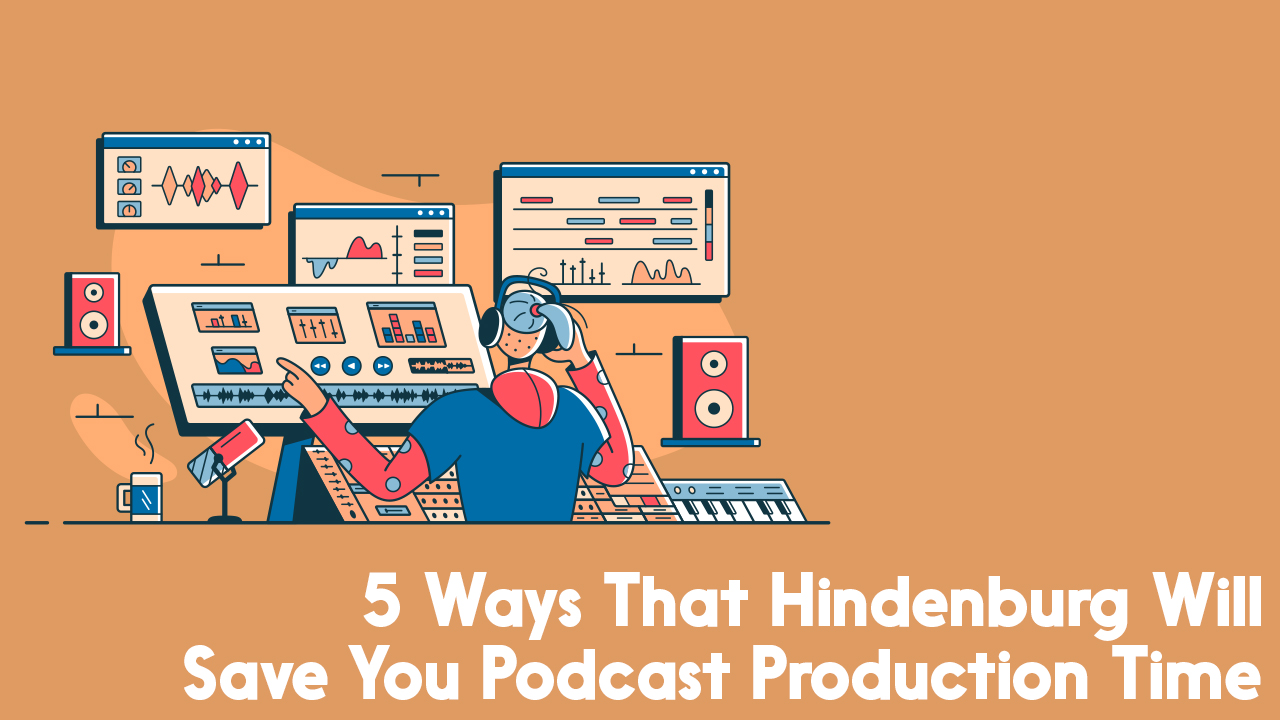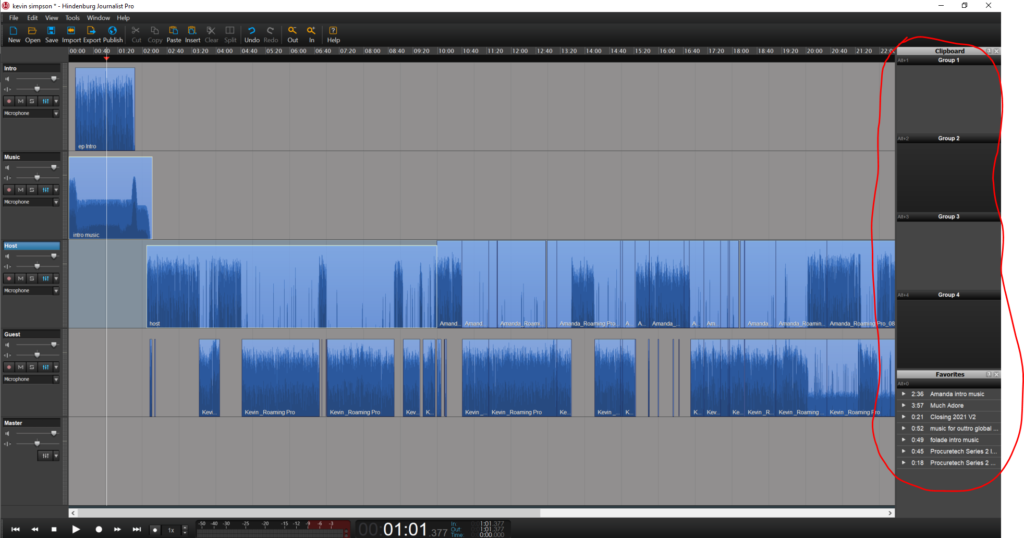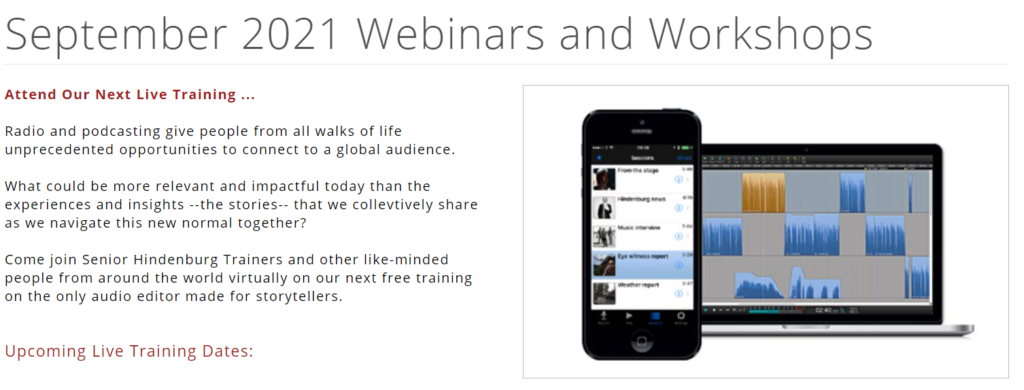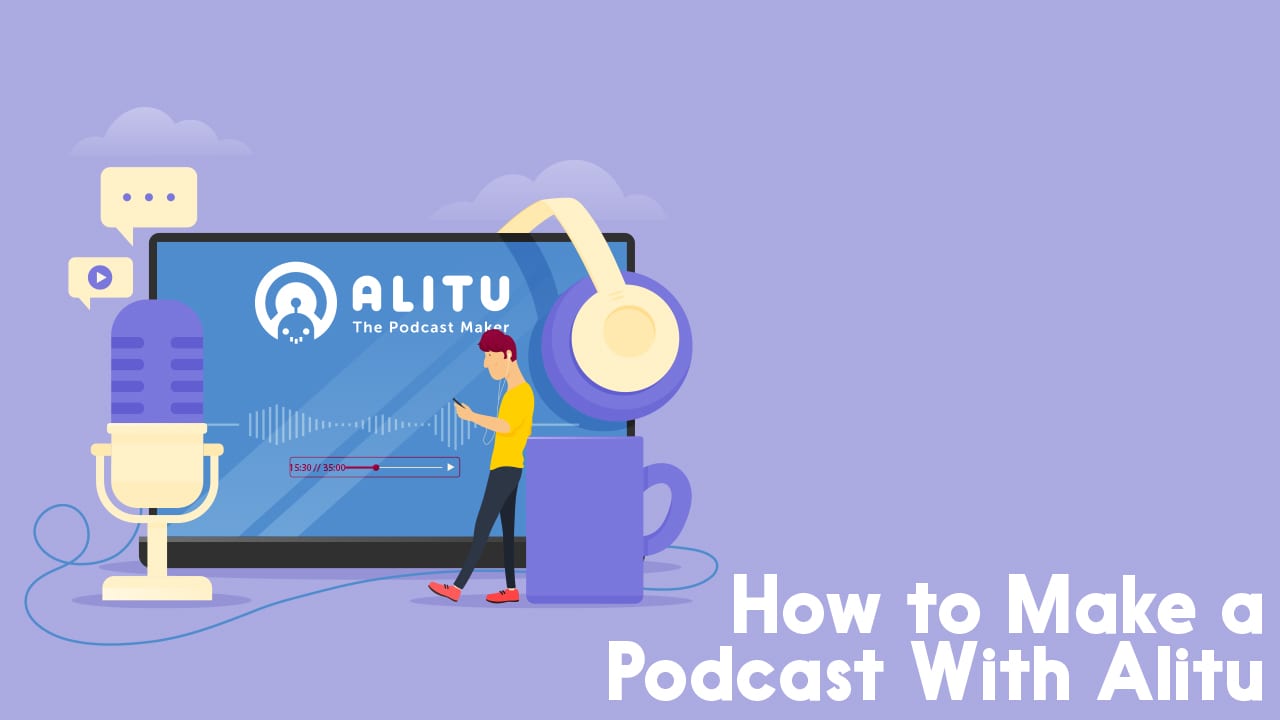5 Ways That Hindenburg Will Save You Podcast Production Time

If you insist on editing your own podcast, then this article is for you. Hindenburg is a DAW (digital audio workstation, a fancy term for editing software) that deserves more attention. This is especially true for editors in their first year of podcast production.
These Hindenburg features will save you time with your podcast production:
- the clipboard
- auto levels and voice profiler
- shortcut keys
- multiple format ease
- community resources and tutorials
How a Radio Necessity Became a Podcaster’s Dream Tool
Hindenburg was created in Zambia in 2008. The Founders of Hindenburg were chatting on a porch because a power outage meant that they couldn’t do their audio editing tasks. Nick and Preben combined their skills and came up with an idea for an editing software that could be light, easy to use and let Journalists focus on the story instead of stressing over the technology. It needed to “be simple, reliable and affordable…and designed for radio.”
I know, you’re not a Journalist.
But if you’re reading this post, you’re probably not an Audio Engineer either. And this middle ground, this is where we podcasters and podcast editors audio live. Jennifer Navarrete of Crypto Content Creators sums it up well: “We as podcasters do not need all the features musicians need to edit music and songs. Hindenburg was made for the spoken word while other audio editors were originally built for music. So the fact Hindenburg gives me exactly what I need and not all the extra stuff I don’t is a huge time saver.”
With these characteristics in mind, let’s talk about 5 Hindenburg podcast production features that can help you to save some time of your own.
1: Every DAW Should Have a Clipboard Panel
I initially found out about Hindenburg from Shaun of The Germany Experience. He was raving about the time that Hindenburg saved him because it simplified so many aspects of his workflow. I also notice that when I mention Hindenburg online, the first thing Editors mention is the clipboard feature.

Chhavi Sachdev of Sonologue raved that “The clipboard is a godsend for producing features and multiple voice podcasts.” I could not agree with her more. Most of the podcasts that I work on have distinct parts: an intro with music, a body, a midroll, and an outro with music. Using the clipboard feature I can sort these parts into the many clipboard boxes before starting the podcast production process. The clipboard area includes the 4 boxes to the right of the tracks in the above image.
When I need these clipboard clips, I just drag them into the waveform. No matter how zoomed in or out of the waveform I am, the clipboard is visible. But you can hide it if you don’t want it visible. Mine is on the right side but you can move it around if you wish. This is a lot quicker and easier than other ways to bring in clips in other DAWs I’ve used previously. Clunky is the best way I can describe those experiences whereas the clipboard is smooth like butter.
2: Shaping Voices in Your Hindenburg Podcast Production With Auto Leveling & Voice Profiler
Cut Hours off Your Podcast Production Time With Auto Leveling (Hindenburg Journalist)
One of the biggest time spenders I had personally with Audacity and Adobe Audition was trying to level multiple tracks. I spent a lot of time and it never came out that great. I added Auphonic to the beginning of my workflow and that helped a lot but it also added another step to my workflow. When you bring an audio file into Hindenburg, it auto levels the track for you. And it sounds great.
Personalize Voice Settings With the Voice Profiler (Hindenburg Journalist Pro)
Going a level deeper into the voice clean up is the unique voice profiler feature. “The voice profiler is amazing because it allows you to create a profile of the podcaster’s voice, and then you can apply that perfect sound to each recording. “ shared Peter Phillip, Producer of the By His Grace Podcast . You can use voice profiler with one time voices or upload a professional sample for a repeated voice. In this case, Hindenburg will replicate the voice characteristics with one click to match the professional sample.
3: Shortcut Keys Streamline Your Hindenburg Podcast Production Workflow
It’s probably safe to say that most DAWs nowadays support some if not many keyboard shortcuts. Even though this is a common feature, I’m going to list it here because it’s a huge timesaver.
What I love about social media is being able to ask Podcasters their favorite shortcut keys and getting such a rich list of very useful ones like these from Suzy Buttress of Casual Birder:
- ] and [ =move to previous and next cut point
- i and o = move in and out (zoom)
- x = ripple delete: this deletes content between two cuts with one click
- z = undo
What’s especially nice is that Hindenburg has a shortcut list on their website for all Hindenburg AND Windows/Mac versions. Here’s a peek at how clean and easy to use the list is.

4: Creating Multiple Formats in Your Hindenburg Podcast Production
If you distribute your podcast to YouTube and other places that benefit from different formats then this point is for you! James Cridland recently shared on Twitter that he uses Hindenburg every day as part of his podcast production workflow for Podnews.
James lists the 6 versions that he produces with Hindenburg on his “How I make…Podnews” webpage. They are:
- An MP3 file, 112kbps joint stereo, -14 LUFS
- An aacHE file, 64kbps stereo, -16 LUFS
- An Opus file, 12kbps mono, -14 LUFS
- An AVI file for YouTube with an embedded image
- An MP3 file for Podcast Radio, a UK radio station
- An aacHE file for Siri’s news briefing service
“With Hindenburg, it’s just one click to produce three of those; a script makes the YouTube video automatically; and producing the broadcast-friendly (and Siri-friendly) audio is just two minutes more work.” James shared.
I’ve never personally tried to make this many versions with any DAW but this sounds like a huge timesaver. Is it? I’d love to know your experiences with this. Feel free to comment below on your multi-format podcast production experiences.
5: Hindenburg Has a Robust Set of Resources and Community
Do you like learning new tips and tricks to improve your podcast production workflow? Yup, me too. This is why you have to check out Hindenburg’s live training sessions. They’re next-level amazing. These monthly sessions are free and include a mix of instruction, practice and discussion.
I attended my first one recently and was blown away by the format. There are materials that you download before the training. During the training they show you how to do something, you do it and can also join discussion rooms and chat with others about any snags you experienced along the way. Then the training continues. They are often 3-hour events and really useful.

But the live training sessions are the tip of the help iceberg.
There’s also:
- online video tutorials
- an official Facebook group
- an unofficial Facebook group
- quick and helpful support staff
- articles on their Knowledge Base webpage
and so much more. If you can’t find an answer to a question with Hindenburg then there probably isn’t one!
Two Obstacles Between You and Hindenburg
I need to be honest with you and mention 2 things that might make you hesitate trying Hindenburg. As always, solutions will be included.
It’s Not Free
“Some of the features that would really benefit podcasters are restricted to Hindenburg Pro” Danny Brown of Podcaster Stories pointed out on Twitter recently. And Danny’s right, it can be expensive if you buy directly from the website. Let me give you some tips to help with this.

- Hindenburg has pricing options such as educational discounts.
- They also usually have a sale for Radio Days in February that brings the price way down. This is worth putting in your calendar now.
- They sponsor a fair number of events. For example, after buying Hindenburg Journalist last February, I won Hindenburg Journalist Pro in a raffle with my virtual Africa Podfest ticket. In other words, when you attend conferences, check out what offers they may have going on.
The Waveform Might Drive You Crazy During Your Hindenburg Podcast Production Time
This is probably only a problem if you started your podcast production on a different DAW and transition over to Hindenburg. The first DAW image below is from Audacity. This is a full waveform. And the waveform below it is Hindenburg’s. It shows you their half waveform. I can’t lie, it is the #1 thing I dislike about Hindenburg. But you get used to it. I did and I’m very stubborn.


Hindenburg Could Be Your Dream DAW
I’m going to be completely honest with you here. Podcast production decisions aren’t easy. There’s no perfect DAW. None. They all have advantages and disadvantages and you’ll just need to find the one that fits you the best.
Personally, I think Hindenburg is a great starter DAW because you can learn it quickly. This gives new editors the mental space to focus on their content during the most delicate stage of their podcast: the beginning months. If you like podcast production after you’ve mastered Hindy, then you can always try another DAW with more capabilities like Adobe Audition, Pro Tools, etc
If you like the sound of Hindenburg’s podcast production simplicity, then you might also be tempted to check out Alitu, which is an easy and all-in-one place to record, edit, produce, and publish your episodes. Alitu was designed to make podcast production simple for folks who know nothing about making audio. You can try it out free for 7-days and check it out for yourself.

Let Alitu Take Care of Your Podcast Editing
Alitu is a tool that takes your recording, polishes it up, adds your music, and publishes the episode, all automatically.
Learn more about Alitu
Start Your Podcast
If you’re reading this article because you’re thinking of starting a podcast, we’ve got more help for you! Making a podcast is a good way to share your voice and story with people around the world. We can help. Check out our guide to How to Start A Podcast for the basics. For a deeper dive into podcasting equipment, planning, editing, and promotion, check out Podcraft Academy. We’d love to help you on your journey.

